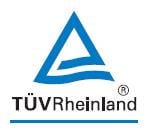
Company leaders need to step up and take greater responsibility for their company’s occupational safety standards. This is what Nelly Yong, Vice President - Certification of Management Systems for Asia Pacific region, believes.
Nelly is also the lead auditor for various ISO certifications covering automotive, quality management and environmental management systems. She has extensive third-party auditing experiences across the Asia Pacific. This is what she has to say about the current and upcoming trends in ISO 45001.
What are the current trends in Occupational Health and Safety (OH&S)? Specifically, what are the main changes in the new ISO 45001:2018 standard?
According to ILO, more than 1.1 million people die from occupational accidents or work-related diseases in Asia and the Pacific every year. In response, governments, workers, and employers in Asia and the Pacific are increasing their efforts to prevent accidents and diseases at the workplace.
With this continued development, I strongly believed ISO 45001 will be the focus standard to be used by many organisations to demonstrate commitments towards ensuring health and safety management in the company, and also in their supply chains as well.
The key challenges for the companies in implementing ISO 45001 would be the change of mindset of the top management of organisations. In ISO 45001, management’s ownership and commitment to the organisation’s Occupational Health and Safety (OH&S) are critical to the standard’s effectiveness and integration. ISO 45001 requires integration of OH&S within the organisation’s management system. This means top management must have a stronger leadership role in the safety and health program. This responsibility is not solely on the shoulders of the Safety & Health Officer anymore.
Instead, top management should ensure that they implement proactive risk-based approach to identify all potential hazard risks before they cause accidents and injuries. Conducting audits, job safety analyses and monitoring of workplace conditions are critical to ensure the proactive approach prescribed by ISO 45001.
Benefits of ISO 45001:2018 Certification
- Demonstrate commitment to occupational health and safety with an internationally recognised certificate, securing a competitive advantage among interested parties
- Increase safety awareness and engagement among employees
- Systematically reduce occupational hazard incidents
- Prevent business disruptions and unnecessary downtime
- Improve your brand image among clients, authorities, and investors
- Increase confidence in the fulfilment of legal and other compliance requirements
- Achieve closer alignment with other ISO standards and business systems, streamlining both inter- and intra-organisation communication

How can companies benefit from using ISO 45001:2018 to mitigate risk?
Many multinational companies had already embarked on integrated multi-standard ISO certification projects which include the certifications for ISO 9001, ISO 14001 and ISO 45001. This is because these three standards follow the same high-level structure, whereas OH&S does not cater for such structure.
Companies, including MNCs in the consumer electronics industry in Singapore, Japan and Korea, had already started to take advantage of this to integrate their certifications rather than maintaining multiple different standards and content.
Moreover, companies are also able to utilise their multi-standard ISO certifications throughout the supply chain. This is a huge advantage and key differentiation factor for corporations with strong management commitment.
In totality, we are looking into the future of occupational safety with top management leadership involvement, not only that of safety leadership in companies. Proactive risk-based approach systematic implementations as a living practice would be the best approach to eliminate accidents & injuries at the workplace.
TÜV Rheinland is an Accredited Certification Body under the German accreditation body, DAkkS. These assessments contribute to the confidence in the quality of services that we provide in the field of certifications in accordance with international ISO standards. We provide a one-stop solution for all the standard certifications needs of our clients.
Keen to obtain your own ISO 45001 certification? Speak to a TÜV Rheinland expert today:



